Prologue
Frankly, it wouldn’t be this big if I had a chance to pick my diploma project for a second time. I had to be at the very beginning of a curve described by the Dunning-Kruger Effect or out of my mind. At the time when I studied, 3D wasn’t a thing in Poland. Even though I studied in a 3D graphic specialty, the number of classes brought up that subject was minimal. Also, I must say, my way of learning back then was extremely unorganized. Despite all my best efforts, I didn’t learn as much of 3D craft as I wanted. Finally, after 3 years of studying there, I was. I had to decide on my diploma project. Of course, I wanted to do something extraordinary, something original. A mixture of determination and lack of competencies. What could possibly go wrong?
Almost two years into it, I knew what. Everything. Although this is a fossil, some of the lessons learned remain valid.
If you want to check first what project I’m writing about, I advice you to click here.
Planning
I started planning my project at the end of my third year of studies. Before the semester ended, I had established my animation’s overall mood and style. I wanted my work to be soaked with a worrying atmosphere and tell a fairy tale in a semi-medieval kind of Tim Burton-like stylized town. I listened to Edgar Allan Poe’s stories to tune myself. I also watched a bunch of Tim Burton animations that he made decades ago. I highly recommend you to check out Vincent from 1982. It’s brilliant.
After I’ve created a world where my story could take place, I took time to plan what kind of character would be a proper hero. I was strongly inspired by the tenth Dr. Who obviously. Yes, I know. Cliché. Pardon me.
Properly chosen inspirations are crucial for consistent vision and shape of the final product. Never underestimate the phase of gathering references.
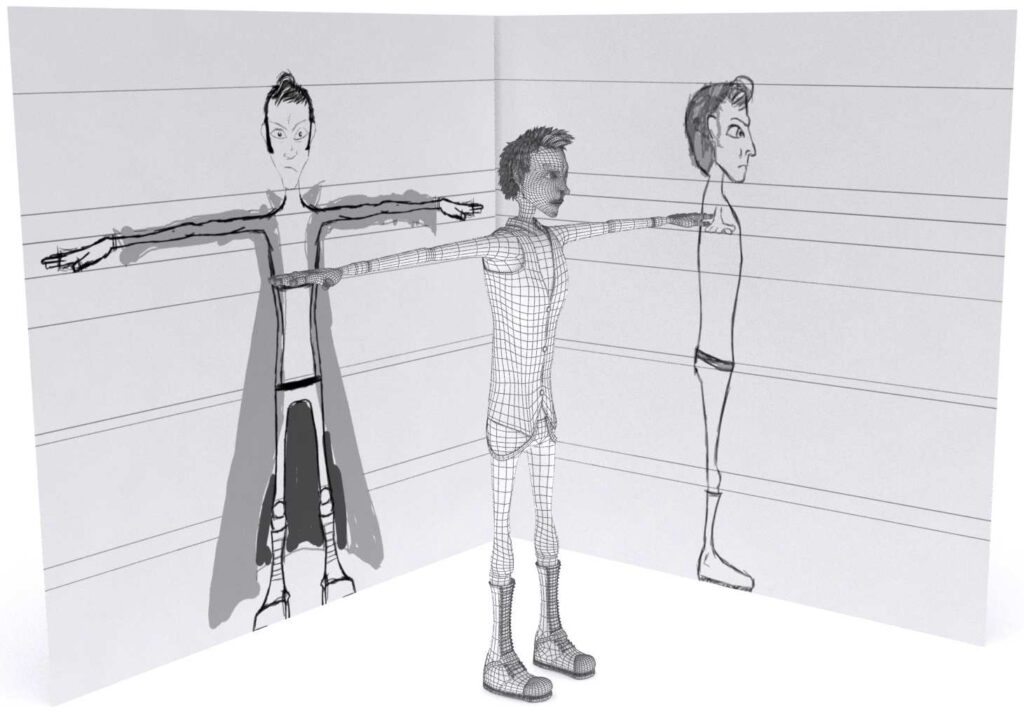
Scenario
To sum up, I had marked out a graphic style and what kind of story I wanted to tell along with defining the hero of this tale. At this point, I still had plenty of time (or at least I thought so) to meditate and let an unrestrained flow of thoughts, so rough ideas could appear in my mind until they connect into a more stable vision.
The main idea for a plot is born spontaneously. The overall concept and a scenario came into existence one evening. Later it repeatedly changed over time, even at the storyboard stage. A lot of scenes were also cut during a montage to keep only necessary scenes and get rid of boring non-crucial fillers.
I rendered poor-quality viewport previews from 3Ds Max to show to my friends and gather feedback on whether they understood what was happening. That way, I cut a lot of footage and saved myself time on rendering redundant parts. Even if something seems easily understandable in your head, that’s not necessarily the case with your audience. Try to confront your ideas with someone’s perspective.
Dream Catcher
What story would fit a calm place from before the steam revolution and Dr. Who running around? I had several options on my mind. I tightened them to only a few, assuming that the story should take place during the night. Here’s why.
- I really wanted the first scene to be a camera flying through clouds lightened by a moon. I found such images and inspirations and was really hooked on them. I think this is my best scene. After that, I could just roll closing credits. For real. Especially if we consider, that the next scene contains a weirdly animated cat sniffing a fallen camera.
- At night everyone is sleeping, which means I don’t have to animate people wandering around. In the early stages of the storyboard, I had planned scenes where citizens are slowly leaving the streets for the night, but that wouldn’t add anything to the story so I got rid of it. I cut a lot of potential work early in planning an animation. Profit!
- Palette of colors. The yellow warm light of street lamps is perfectly mixed with cold shades of blue. Profit again!
After all the planning, that’s how I could sum up the plot: ‘One of the countless adventures that the unnamed hero goes through when he tries to keep nightmares away’. Reference to native American decoration quickly snaps into the right place. That’s how our mysterious hero got his name- Dream Catcher. At this stage, I realized the massive amount of work ahead of me. I was terrified.
Enviroment
I’ve started modeling a couple of unique buildings. I knew, that it would be enormously time-consuming to make the whole city with this approach. This phase was about working out the modeling workflow and getting along with the stylized form. After I was happy with achieving style, I created several different modules representing house stories. When mixed, it served me as over 20 new unique buildings.
I had a couple of aerial shots, so it was crucial to prepare interesting and convincing topography. To accomplish that, I searched for a few illustrations of medieval cities and listed out several landmarks such city should contain:
- town hall
- marketplace
- trade district
- wealth district
- suburbs
I have modeled surroundings based on prepared sketch. First roads, and some landmarks. Later I filled the empty spaces with buildings. Having complete environment, I could start tweaking Mental Ray settings and make a few test renders. I was rather happy with the results.
Other assets
I sought inspiration from various sources. Weapon to dematerialize nightmares based on ‘Nerf’ toy gun. Every asset was poly-modeled, without high poly, and without baking. Nothing is interesting here. Characters had faces animated with Morph Targets. The cloth simulation of Dream Catcher’s cloak was a challenge. Some scenes I had to cut earlier because of a bunch of vertices going wild. Oh, since we’re discussing animation…

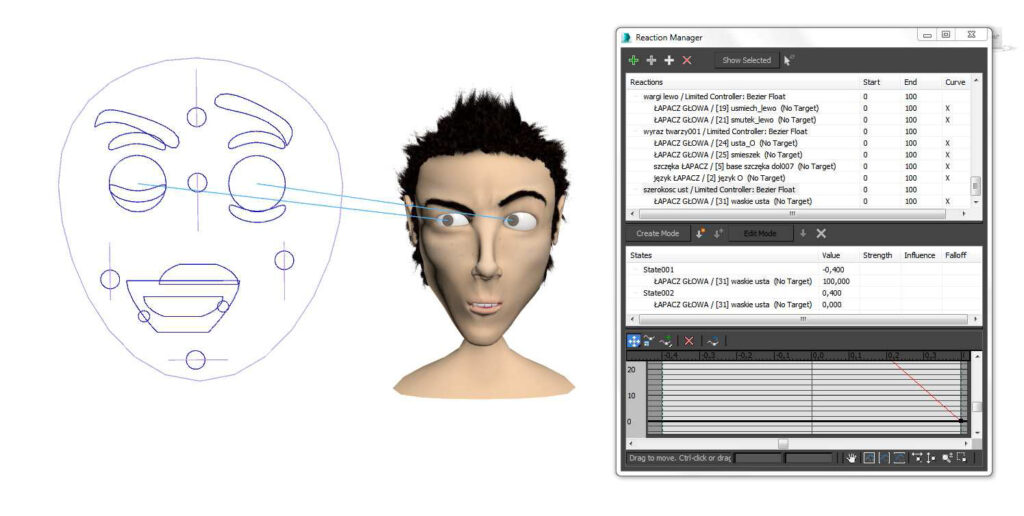

Animation
As you can tell it looks terrible. That was the most challenging part of the whole project. I didn’t know anything about it, and thankfully I found a procedural walking system inside CAT. Otherwise, I would have stayed in this phase forever.
Due to a lack of experience, I made plenty of mistakes during the animation process. I didn’t bother to block out my animation. I went full improv there. Which often led to weird timing, boring poses, and the necessity of fixing fully animated sequences when it turned out they are too slow or too fast. I was so desperate, I tried to use Kinect to gather mo-cap data. I don’t know if Kinect was so bad at it, or my knowledge so limited, but I had to abandon this idea, without any usable results.
If I were doing animation today, I would definitely block out a shot with several key poses, and after adding a couple of in-between uses that to preview and confront it with my friends. That would have saved me so much time.
Particle systems
Dreams were PFlow emitters, attached to a sphere with emissive material and set in constant rotation. Simple solution. Clouds from the first scene was a completely different story. I desired something that will attract the viewer’s attention from the beginning. I’ve created them using FumeFX and this whole sequence took over a month to render (40 minutes for one frame). That was a brutal experience. When at mornings I checked renders from the night before, it often turned out that light is incorrectly calculated and dozens of frames must be re-rendered. That was exhausting.
Sticky notes
If I were to point out one matter which saved this whole project, that would be sticky notes. Notes that were placed all over the front of my wardrobe for months. Crossing those out, filled me with an unspoken feeling that there was an end to this work somewhere. In the beginning, I haven’t used any system for tracking progress. That period was chaotic and felt like Sisyphean work.
When stickers kicked in, it all changed immediately. I wrote notes with specific tasks and proposed deadlines, and all remaining work suddenly started to shape into something feasible. It restored my long-gone motivation. Back then, I wasn’t familiar with Trello, Jira, or any task-managing software, but even if I was, I would still use sticky notes. The feeling of crossing out finished milestones was purifying.
When I noticed that some tasks may take too long, I just cut out certain scenes or simplified them. This is difficult, but also crucial to long-term projects. It’s better to finish your imperfect venture, rather than drag it out indefinitely hoping for reaching perfection. During the animation phase, I locked myself in a room and worked for dozen hours per day. This experience was extremely demanding. Since Dream Catcher, I have never again managed to do a project on such a large scale even though my skillset in every aspect is much higher than back then. Maybe because that includes self-awareness and common sense.
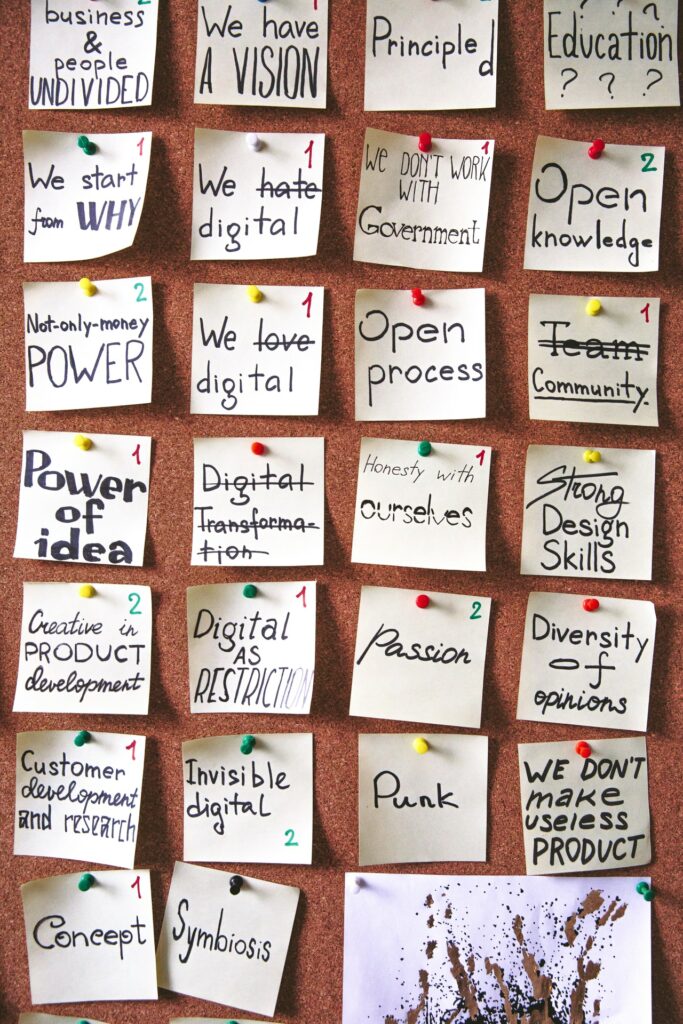
And here it is. My creation, you’ve been reading about for the last couple of minutes. The narration is in Polish, but the plot isn’t too complicated. so even without sound, you should be able to figure out what’s going on.
Conclusion
Without a doubt, I gained a great amount of experience and knowledge during this project. Can I definitely discourage anyone from doing something of similar complexity without experience? Of course not. Nowadays, there are plenty of free-to-use materials, textures, models, HDRIs, animations, ways to automate processes, real-time rendering pipelines, and others to discover during your own journey. One just should have in mind what is the purpose of it all.
Mine was to get into the 3d animation industry straight after my studies. Did it work? Not at all. Although this project was a huge leap, none of its aspects were perfected. Therefore, I needed a couple of years to find my way into the game dev industry, and my first role as a 3d artist. Do I feel like all this time was wasted?
Well, kind of. It didn’t guarantee me a position at DreamWorks nor any position at all, nevertheless, that was a wonderful adventure. If I didn’t have to work professionally, this is how I’d like to spend my days. Creating without any restraint. So if you feel this makes you happy as well and you have enough resources go for it. Just keep in mind these final bits of advice, and you’d be all right.
- Sticky notes. Setting up and sticking to deadlines is horrendously important. But at which point you decide to work with them is up to you. If you have some vague idea for an upcoming project, but there’s no specific time you need to release your work, you can take your time. But if you are a contractor and there’s a specific deadline you shouldn’t let your imagination wander around. I personally like, when pieces fall together in their places under the influence of movies I watch, the books I read, or everyday events. Eventually, you have to set milestones. The smaller they are, the more easily it is to complete them.
- Sparing yourself work starts at the beginning of your project. It is easy to complicate base assumptions, which might cause problems later. It’s proficient to cut your work in the early stages! Do you need a giant battle scene with dozens of characters in a story about a dragon slayer? Does this dragon need complex facial expressions, or it won’t be able to speak so you could simplify it? Ask yourself, such questions.
- Understanding your imagined world, characters, and motivations are a great way of creating compelling and reliable stories. Setting basic constraints forces you to look for inspiration within a certain consistent bubble. Of course, you can still mix steampunk with a fairy tale about a mermaid, but if at some point you would start to lean toward cyberpunk, you know that’s too far from what you want to do. If you put too many contradicting ideas inside one project its complexity might overwhelm you. Keep it simple.
- Creating a simple storyboard is a great way of visualizing whether your idea is clear, consistent, and interesting. It’s worth sketching it even if you lack drawing skills. Stickmen on a plain background will be enough to decide which scenes should be cut off.
- Research and development. Give yourself time for testing different solutions, before utilizing a tool that turns out useless for your project or too difficult to use in your case. My project wasn’t technically challenging, but if your project strongly depends on a certain effect, be sure you can provide it. Otherwise changing the main concept in the middle of the pipeline might be painful. E.g. I wanted to see if mo-cap could be a good way to animate my character. Eventually, it wasn’t, but I’m glad I checked on a small part instead of recording plenty of sequences and wasting a great amount of time.
- Asking for feedback. I know this can be difficult to show unfinished work and any critique hurts, but only at the beginning. This is crucial because when you work in a team, you constantly gather and give feedback, and learning how to do it properly will help you progress. If you don’t want to show your unfinished work to your friends, you can ask for feedback on Facebook groups, Discord servers, professional forums, etc. This way, you gain different points of view and sometimes some clever ideas you would have never thought of.




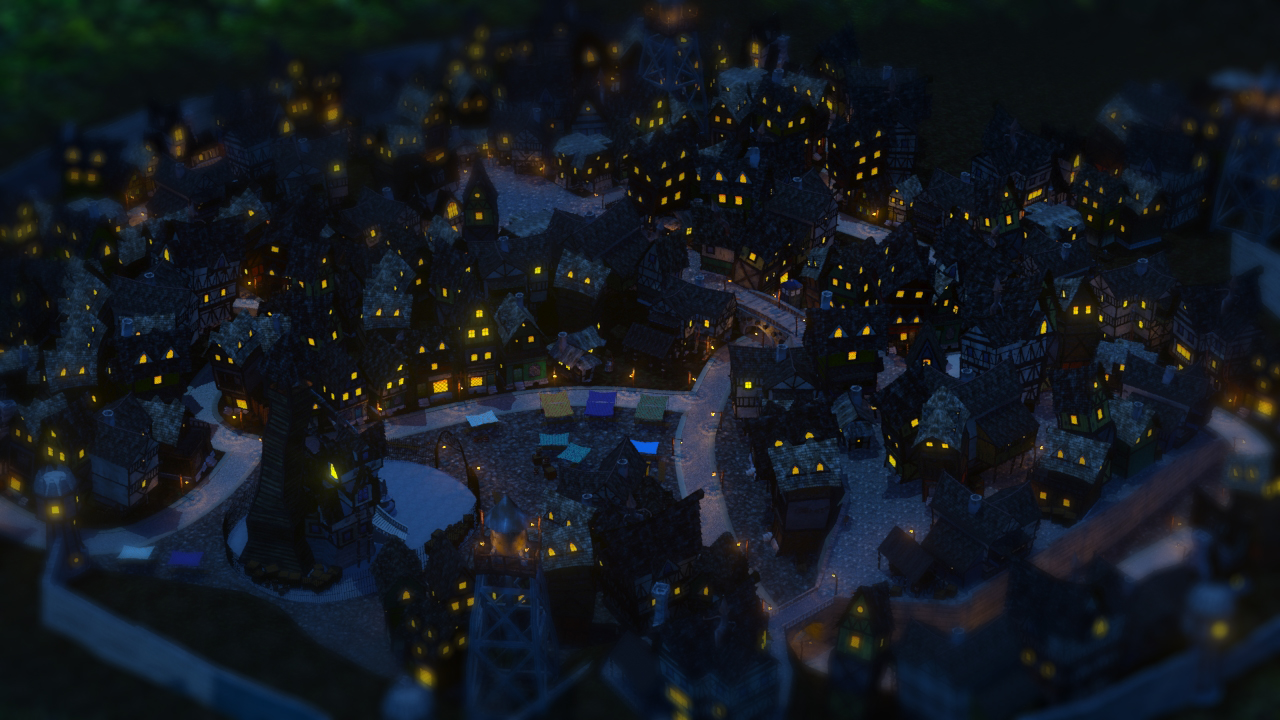

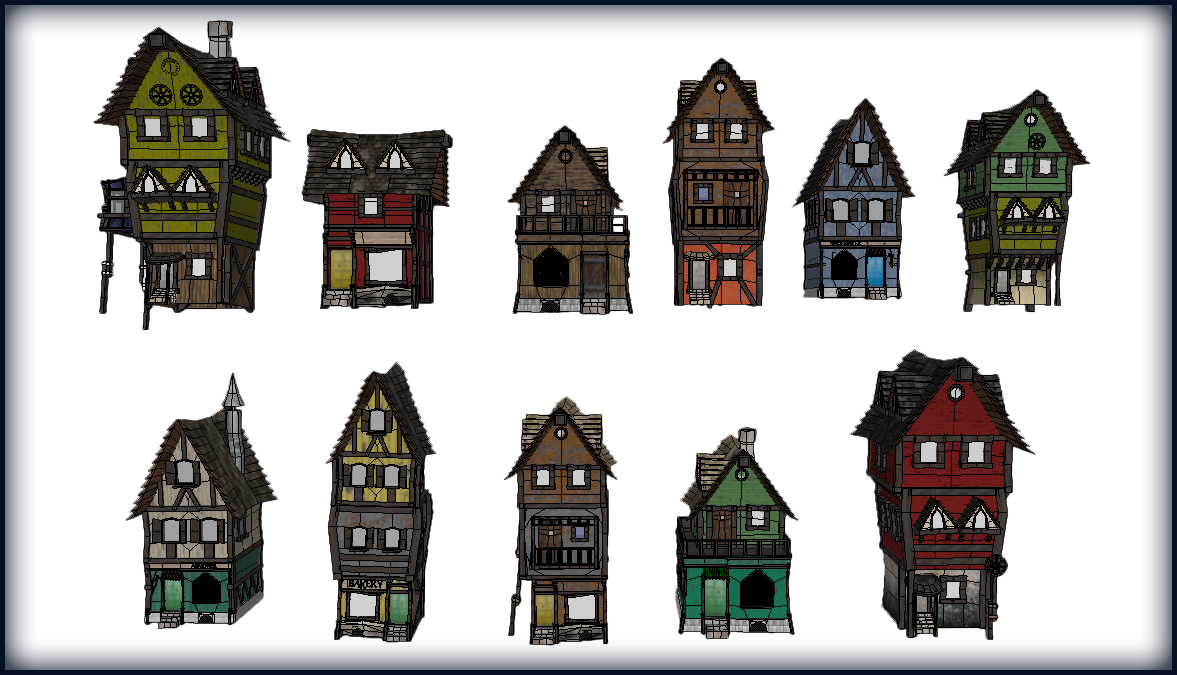

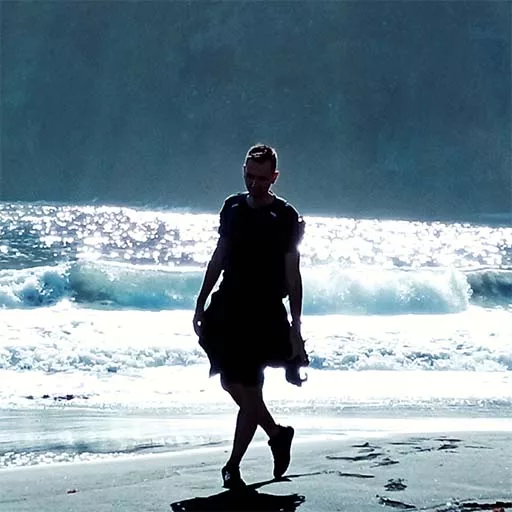


:internet-explorer:
Great post!
Especially I like your points about simplifying assumptions and noting what should be done yet. It reminds me about managing Backlog in any software project! 😀
Recently I also appreciated how those points are important in pet projects. Because they don’t have any deadlines we easier convince ourselves to making things… more complicated and never deliver this first simple MVP 😀
However, I think that much better than maintaining your backlog (things that should be done later) are… just simple notes. Perfectly if they support links (https://en.wikipedia.org/wiki/Zettelkasten). For me the best works vimwiki (https://github.com/vimwiki/vimwiki), however, there are better tools for those who don’t like VIM, i.e. Obsidian or Zettel notes. Obviously I’m talking about solo work here! 😀
Anyway, good job man!